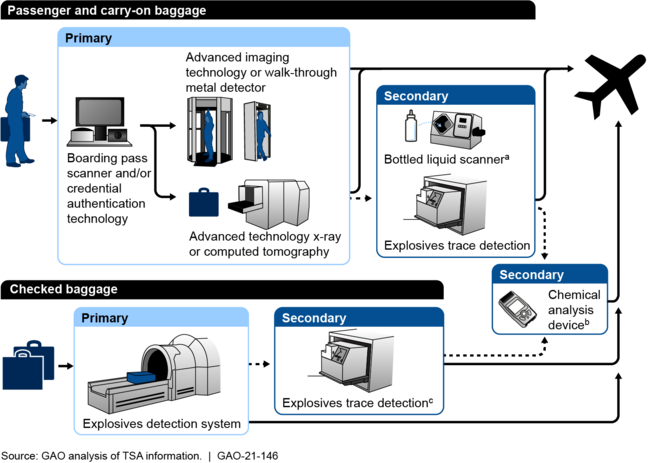The Transportation Security Administration relies on technologies—such as explosives detection systems—to help secure the travel of about 2.8 million passengers every day. TSA has developed a required strategy with 12 initiatives to promote innovation in security technology and get more diverse small businesses into the market.
The U.S. Government Accountability Office (GAO) review concluded the current TSA strategy for effectively eliminating market barriers for small business solutions has failed to incorporate ways to effectively measure how well enacted strategies are working.
In a report issued this month, GAO formally recommended developing such measurements of effectiveness, as well as other improvements.
Overview
The January 2020 TSA Efforts to Diversify Security Technology strategy addresses the requirements of the 2018 TSA Modernization Act and outlines 12 strategic initiatives to increase small business participation in its marketplace. Moreover, the strategy’s initiatives are generally consistent with common practices cited by comparable federal agencies, including vendor outreach and linking small businesses together with bigger contractors.
TSA has not developed outcome-oriented performance measures, such as baseline goals or target timeframes to assess the effectiveness of the initiatives in its strategy. While TSA collects some output metrics on its initiatives, leading practices note that outcome-based measures can help track progress in meeting goals. TSA also has not collected data on small businesses’ progress across its acquisition phases, such as capturing the overall time, costs, and ability to meet security requirements.
Federal standards call for the use of quality information to achieve objectives. Small businesses GAO met with told GAO they continue to face challenges entering TSA’s marketplace—such as navigating it’s testing and evaluation process and identifying security requirements—despite TSA’s efforts to address them through ongoing and planned initiatives. Developing outcome-oriented performance measures and collecting data, will better position TSA to assess the effectiveness of its initiatives to diversify its security technology marketplace.
Examples of Transportation Security Administration (TSA) Security-Related Technologies

Why GAO Did This Study
With the ongoing threat of terrorism, TSA is looking to innovative technologies to improve security. In response to the Act, TSA developed a strategy to promote innovation and increase small business participation in its security technology marketplace.
The Act includes a provision for GAO to review this strategy. This report examines, among other things, the extent to which TSA’s strategy includes the statutory requirements of the Act and compares to common practices of federal agencies to increase small business participation and the extent to which TSA has performance measures and data to assess the effectiveness of its initiatives.
GAO compared TSA’s strategy to statutory requirements and practices of comparable federal agencies; interviewed TSA and federal officials from five selected agencies responsible for small and disadvantaged business programs, and a nongeneralizable set of small businesses selected to provide various perspectives on participating in TSA’s acquisition processes; and analyzed data from the Federal Procurement Data System–Next Generation.
Recommendations
GAO is making two recommendations, including that TSA (1) develop outcome-oriented performance measures and (2) collect data, where appropriate, on small businesses’ progress across TSA’s acquisition phases.
TSA Lacks Outcome-oriented Performance Measures and Data to Help Reach Objectives to Diversify its Marketplace. GAO Report to Congressional Committees, March 2021.
Edited by Stephanie Lizotte



